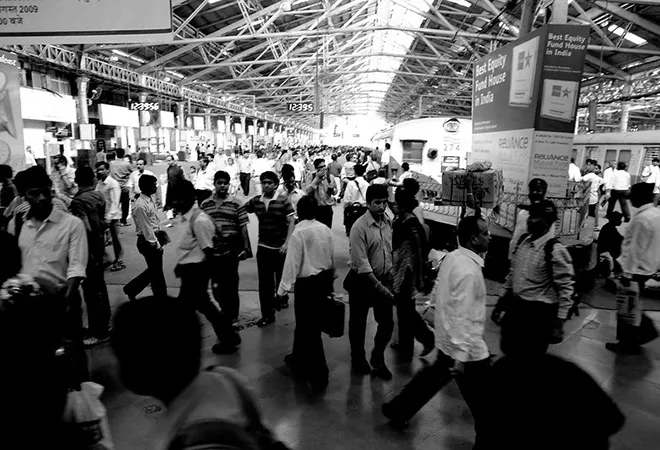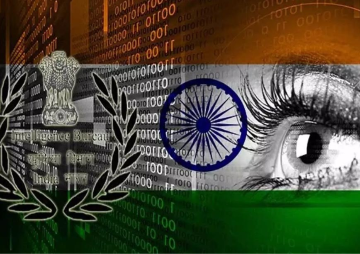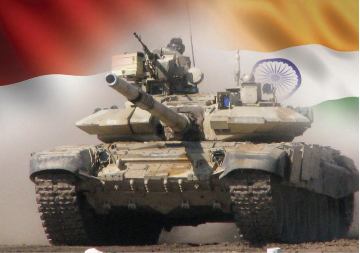
Crowd management has been part of the charter of duties of the district administration from the very beginning. However, the contextual background in which old methods of managing multitudes were devised and were practiced have radically altered. These strategies require a re-examination in light of the changes and experiences of the last few years, and a resetting of the management methods and protocol.
The first point of note is that India’s increasing urban population is getting concentrated in its large cities. Its
urban population has grown from six million in 1951 to 380 million in 2011, and should now be touching the 500 million mark. While the number of cities and towns has gone up from 2,843 in 1951 to 7,935 in 2011, what is more remarkable is that metropolitan cities have risen from five to 52. Several of these have become megacities and their density continues to rise. Mumbai is now around 30,000 persons per square kilometer and more than two dozen cities have densities above 20,000. As a consequence, in 1951, there was only 18.9 percent of India’s urban population was in metropolitan cities, it has risen to 42.3 percent in 2011. It is these large cities that are most prone to the formation of big crowds and a consequent management challenge.
While the number of cities and towns has gone up from 2,843 in 1951 to 7,935 in 2011, what is more remarkable is that metropolitan cities have risen from five to 52.
The second point for consideration is that crowds have become more frequent. If we divide such formation of crowds broadly into regular events and sudden events, both have risen in numbers. To make matters more difficult, there has been a steep rise in events triggered by climate change. A spate of urban floods in major cities is becoming an annual phenomenon; incidents of earthquakes, severe heatwaves, the recurrence of epidemics, pandemics, and water scarcity — all require a multitude of management tasks. The latest and somewhat bizarre example is the entry of wild animals (bison, leopards, elephants) into human settlements that have led to the formation of large crowds and the need to manage these events without harming the animal.
Thirdly, technology has allowed much greater possibility of crowd manipulation, infiltration, and exploitation. Mobile phones and social media have become powerful mass communication tools. Methods used by crowd leaders, therefore, have evolved and have become more sophisticated. To add to the complexity, politics in the country has become extremely fractured and political parties today are prepared to use any method to come to power. Cornering ruling parties and governments through boisterous, large crowds that are prepared to do harm, is now a common feature. The cited factors have rendered crowd management and control to be much more challenging than in the past.
While India’s population has increased and events that require crowd management have multiplied, the administrative machinery in metropolitan cities has not kept pace.
Responding to the cited changes, the local administrative system in metros is changing to the ‘
police commissioner’ and ‘municipal commissioner’ system. Under this arrangement, police and magisterial powers in a city get combined into the office of the police commissioner, and civic functions are in the hands of the municipal commissioner, hence, displacing the district collector and the district superintendent of police. That puts greater responsibility on the police commissioner who has the sole responsibility of controlling crime and maintaining law and order. Today, there are 71 cities across 15 states where this system exists, and this is going to go on increasing. However, while India’s population has increased and events that require crowd management have multiplied, the administrative machinery in metropolitan cities has not kept pace. In 2013, the United Nations studied 71 nations and found India had 138 police personnel per lakh population which was the 5
th lowest among the 71 nations. The National Police Bureau stipulates 176 police personnel per lakh population and the United Nations prescribes 222 policemen per 100,000 population. Neither of these norms are satisfied in the case of India. The cited events are likely to remain with us and will likely aggravate in the future. Hence, multitude management must build in these manifestations and manpower deficits into its refurbished strategy.
The encouraging part is that technology has made as much an entry into managing crowds as it has in constituting and manipulating crowds. Live videography, drones, and CCTV cameras are now widely used and are very helpful in crowd monitoring and in capturing evidence. In the Kumbh Mela, artificial intelligence was successfully tried out for crowd monitoring. The use of social media to scotch rumours and send messages or blocking them has been very successful. ‘Flow camera’ and ‘
WiFi triangulation’ are methods that are used to get an idea of the crowd size and density. ‘
Radio Frequency Identification’ (RFI) can be linked to ‘wireless sensor networks’ (WSN) that provide crowd information.
Fog and cloud computing have been developed for getting data about crowds. Algorithms have been crafted that can help in stampede detection. Drones have been used for both delivery and monitoring crowds.
The encouraging part is that technology has made as much an entry into managing crowds as it has in constituting and manipulating crowds.
A whole range of non-lethal crowd control gear has also been developed. Authorities have been using tear gas and water cannons and rubber bullets for dispersing crowds. Police around the world have also been using chemical irritants, and malodorants such as ‘
skunk’ that the Israeli armed forces have crafted. Kinetic energy weapons, electro-shock devices, pepper spray, stun guns, and such other equipment are now also available in the market. Not all, however, have given the best results. Their use, therefore, has to be carefully selected. To make up for the manpower shortages, outsourcing is a method that police are using in many countries, especially in technology operation and non-core jobs. Over a period of time, we expect that the private sector will develop competencies in many areas. Hence, in cases where police fall short of manpower or with regard to non-core elements of crowd control or in areas where police personnel do not have competencies, outsourcing can come to the rescue.
In the management of mass gatherings, there are some basic rules of the game that sometimes are lost sight of, leading to compromises in the quality of management. The first is that whenever a crowd situation arises and personnel are required to be sent on crowd management duties, their safety and their well-being is the first item to be taken care of. Getting all the proper protective gear, food arrangements, rest arrangements, and workload management together are absolutely important. Men cannot be put in harm’s way on account of neglect of such factors; they will have enormous impact on the morale of the men. Experience has also shown that large crowds turn more problematic. Wherever possible, therefore, crowds must be broken into smaller groups. Proactively, authorities must do all in their power to stop the attempt of the crowd to congregate as a single mass. It is advisable to video record crowd conduct as much as possible. These would be useful for preparing a report that can be backed by irrefutable evidence that will stand judicial scrutiny.
Wherever possible, crowds must be broken into smaller groups.
The presence of electronic media and live coverage of events is a double-edged sword. It is a fact of life with which administration has to live with. The good point is that it catches both crowd behaviour as well as police action that many times can turn supportive and expose rumour-mongers. However, electronic media demands interaction. Its total avoidance by authorities only allows more space for negative propaganda to others. Strategic information, therefore, must be shared. Such people in advance need to be selected who can talk clearly, preferably from a written script and in the language that the crowd understands. Moreover, administration must use professionally competent persons who are properly trained in the art and science of briefing, capable of negotiating the pitfalls of electronic media.
The views expressed above belong to the author(s). ORF research and analyses now available on Telegram! Click here to access our curated content — blogs, longforms and interviews.



 Crowd management has been part of the charter of duties of the district administration from the very beginning. However, the contextual background in which old methods of managing multitudes were devised and were practiced have radically altered. These strategies require a re-examination in light of the changes and experiences of the last few years, and a resetting of the management methods and protocol.
The first point of note is that India’s increasing urban population is getting concentrated in its large cities. Its
Crowd management has been part of the charter of duties of the district administration from the very beginning. However, the contextual background in which old methods of managing multitudes were devised and were practiced have radically altered. These strategies require a re-examination in light of the changes and experiences of the last few years, and a resetting of the management methods and protocol.
The first point of note is that India’s increasing urban population is getting concentrated in its large cities. Its  PREV
PREV


